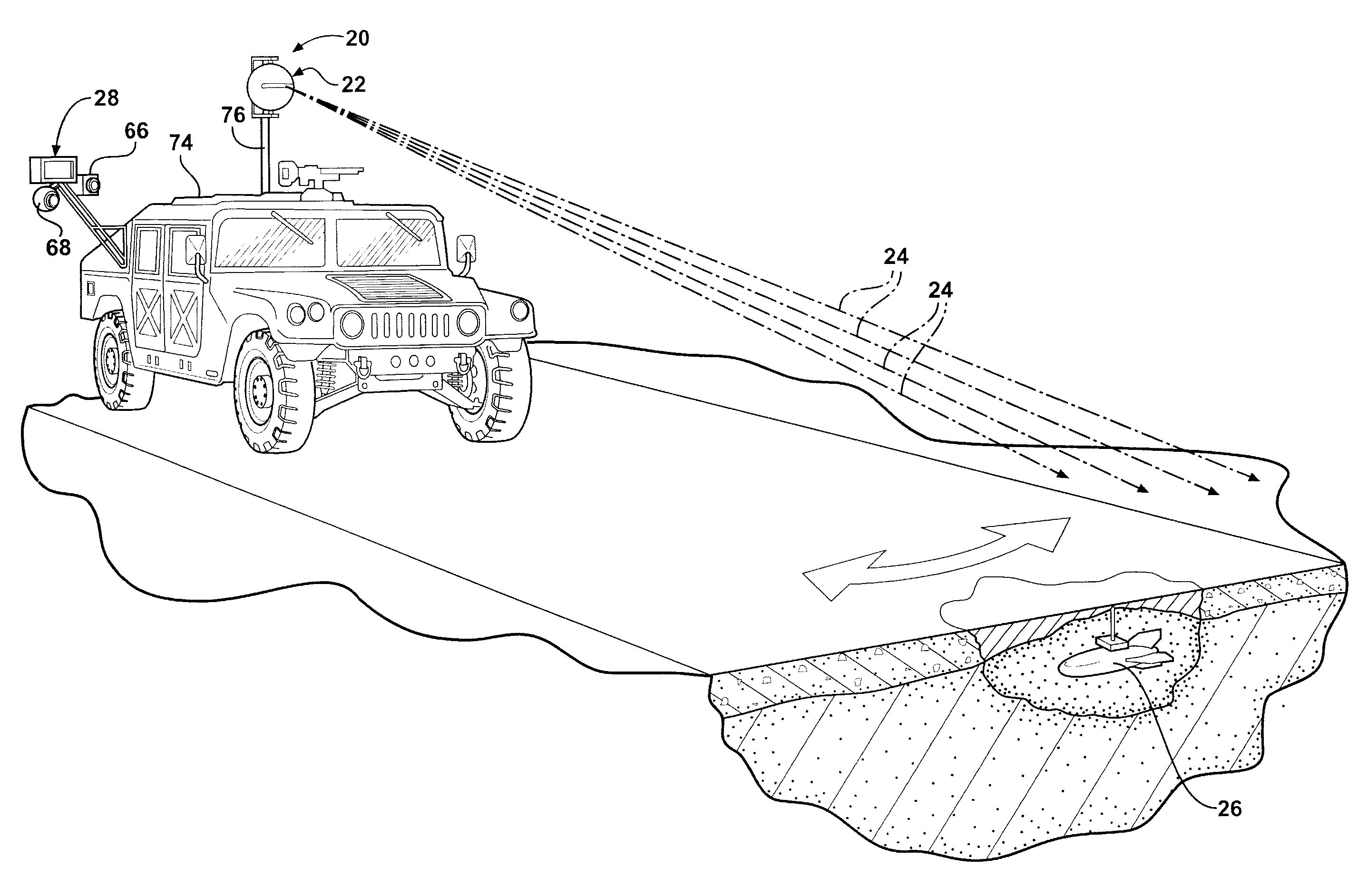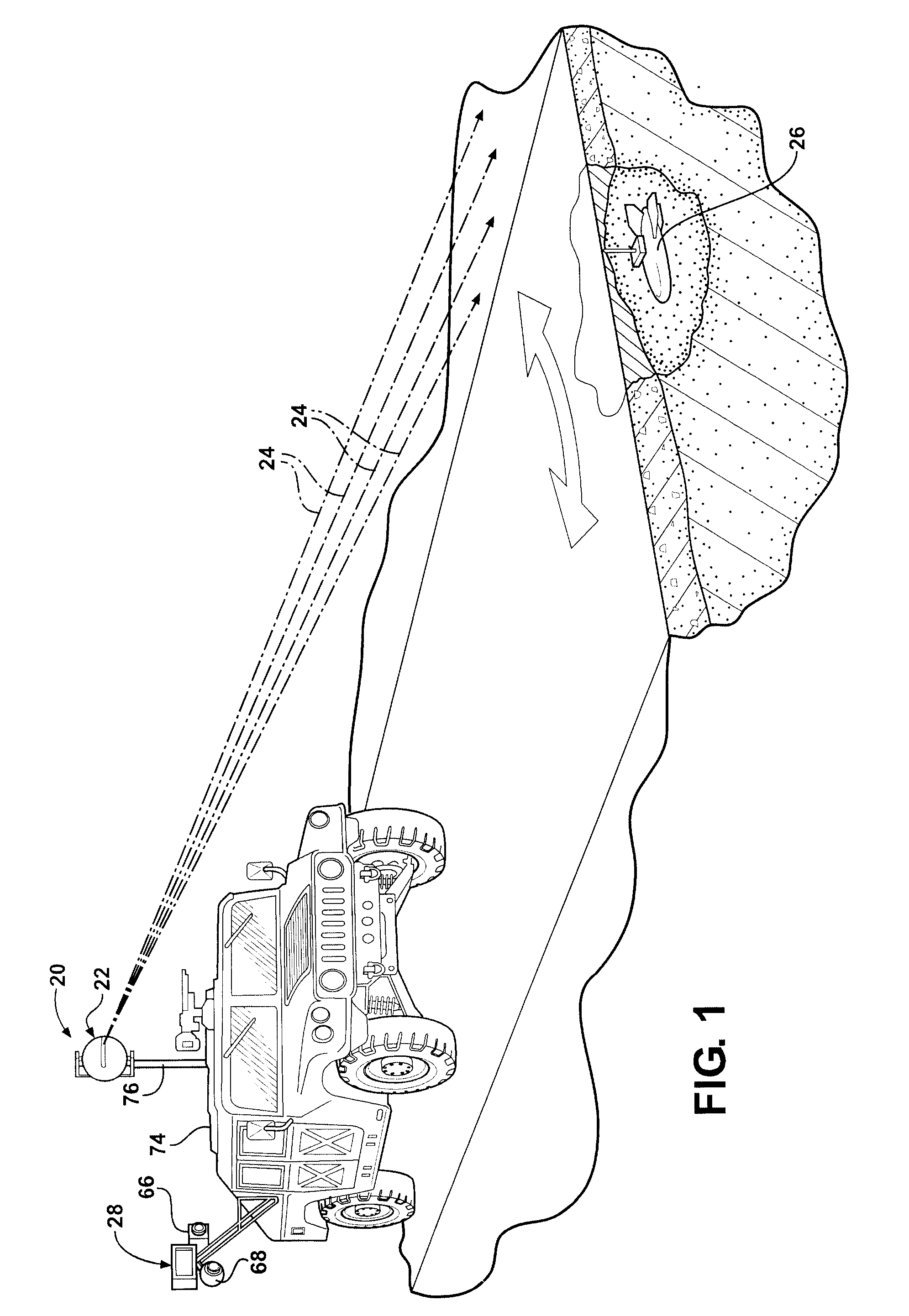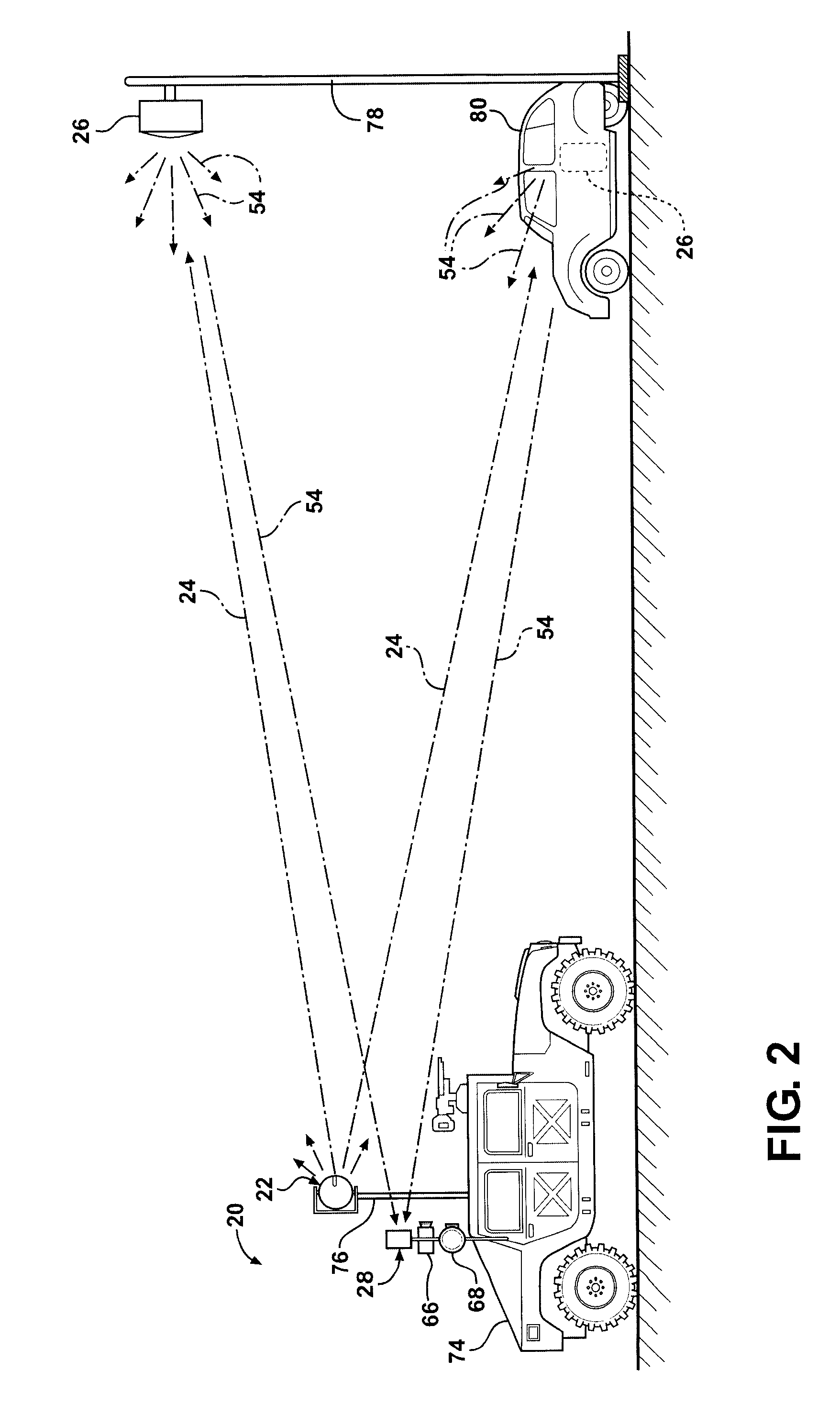Remote detection of explosive substances
a remote detection and explosive substance technology, applied in the field of explosive substance detection, can solve the problems of limiting the success of tnaa, reducing the signal-to-noise ratio (snr), and increasing the false alarm rate, so as to accurately locate the position of a hostile target
- Summary
- Abstract
- Description
- Claims
- Application Information
AI Technical Summary
Benefits of technology
Problems solved by technology
Method used
Image
Examples
Embodiment Construction
[0036]FIGS. 1, 2 and 4 illustrate graphically an apparatus 20 for detecting remote explosive substances in accordance with one embodiment of the present invention. (Conventional elements, such as housings, mountings, supports, electrical power supplies, etc. are shown in greatly simplified form or omitted altogether for ease of illustration.) The apparatus 20 has a neutron beam generator 22, which directs a neutron beam 24 across a search area that may contain one or more remote suspicious targets 26. A target 26 may be generally defined as a hostile, hidden or suspicious object that has the potential to harm people or property. In its most common embodiment, a target 26 is an improvised explosive device (IED) or bomb. The apparatus 20 also includes a gamma ray detector 28 and a plurality of data collection modules and sensors (described in more detail below), along with a detection processing module 30. These several main components of the apparatus 20 are first broadly described b...
PUM
| Property | Measurement | Unit |
|---|---|---|
| distance | aaaaa | aaaaa |
| energy | aaaaa | aaaaa |
| distance | aaaaa | aaaaa |
Abstract
Description
Claims
Application Information
 Login to View More
Login to View More - R&D
- Intellectual Property
- Life Sciences
- Materials
- Tech Scout
- Unparalleled Data Quality
- Higher Quality Content
- 60% Fewer Hallucinations
Browse by: Latest US Patents, China's latest patents, Technical Efficacy Thesaurus, Application Domain, Technology Topic, Popular Technical Reports.
© 2025 PatSnap. All rights reserved.Legal|Privacy policy|Modern Slavery Act Transparency Statement|Sitemap|About US| Contact US: help@patsnap.com



